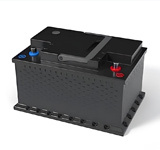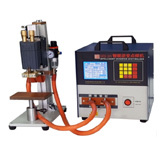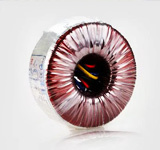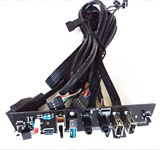21
2024
/
12
19
2024
/
08
How to maintain the Three Phase Transformer for a long lifespan?
Three phase transformers are crucial components in electrical systems as they help distribute power efficiently. To ensure their long lifespan and optimal performance, it is important to properly maintain them. Here are some tips on how to maintain a three phase transformer: 1. Regular Inspections: Regular inspections of the transformer are essential to check for any signs of wear and tear, loose connections, or leaks. Inspections should be carried out by qualified technicians who can identify any potential issues and address them promptly.
27
2024
/
03
What should be noted when using Prismatic Cell?
Prismatic cells are a type of rechargeable battery commonly used in portable electronic devices such as laptops, smartphones, and tablets. When using prismatic cells, there are several important factors to keep in mind to ensure their safe and effective operation:
27
2024
/
03
How does a Cylindrical Cell usually protect itself?
A cylindrical cell typically protects itself through several mechanisms to ensure safe and reliable operation. Some of the key ways in which a cylindrical cell protects itself include: 1. Overcharge protection: Cylindrical cells are designed with built-in protection mechanisms that prevent overcharging. Overcharging can lead to increased temperature, gas generation, and ultimately cell failure. The protection circuitry in the cell monitors voltage levels and shuts off the charging process once the cell reaches full capacity. 2. Over-discharge protection: Cylindrical cells also have protection features to prevent over-discharge. If a cell is discharged beyond a certain point, it can cause irreversible damage and reduce the cell's lifespan. The protection circuitry in the cell will cut off power when the voltage drops below a safe threshold to prevent over-discharge. 3. Overcurrent protection: Cylindrical cells are equipped with protection against high currents. Excessive current can lead to overheating, which can damage the cell and pose a safety risk. The protection circuitry in the cell will limit the current flow to a safe level to prevent overheating. 4. Short circuit protection: Cylindrical cells have safeguards in place to prevent short circuits. A short circuit can cause a rapid discharge of energy, leading to overheating, fire, or explosion. The protection circuitry in the cell will detect a short circuit and disconnect the cell from the circuit to prevent damage. 5. Temperature protection: Cylindrical cells are sensitive to temperature changes, and excessive heat can degrade the cell's performance and safety. The protection circuitry in the cell will monitor the temperature and shut off the cell if it exceeds a safe threshold to prevent overheating. 6. Pressure relief valve: Some cylindrical cells, especially those used in high-performance applications or in extreme conditions, are equipped with a pressure relief valve. This valve releases excess gas that may build up inside the cell due to overcharging or high temperatures, preventing the cell from rupturing. Overall, cylindrical cells are designed with multiple layers of protection to ensure safe operation and prevent potential hazards. These protection mechanisms work together to safeguard the cell from overcharging, over-discharging, high currents, short circuits, overheating, and pressure build-up, ultimately prolonging the cell's lifespan and ensuring reliable performance.
27
2024
/
03
When choosing a terminal cover, it is important to consider the specific requirements of your application as well as the type of terminals you are using. Here are some factors to consider when selecting a terminal cover: 1. Material: Terminal covers are typically made from materials such as plastic, rubber, or metal. The choice of material will depend on the level of protection required for the terminals, as well as the environment in which they will be used. For example, if the terminals are exposed to harsh chemicals or extreme temperatures, a more durable material like metal may be necessary.
27
2024
/
03
What is a Battery PVC separator?
A battery PVC separator is a crucial component in a rechargeable battery, serving as a barrier between the positive and negative electrodes to prevent short circuits while allowing the flow of ions between them. It is typically made of PVC (polyvinyl chloride) material, which is known for its high thermal stability, chemical resistance, and mechanical strength.
27
2024
/
03





















